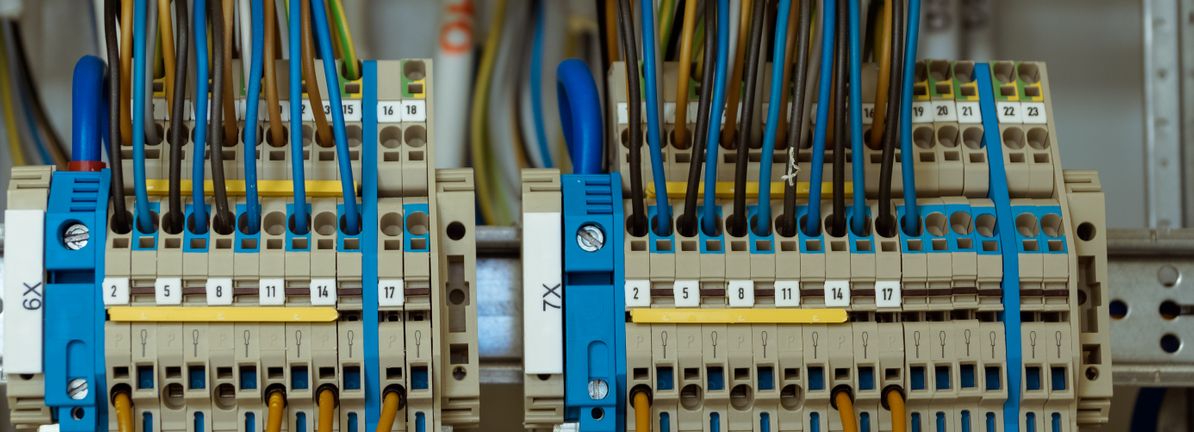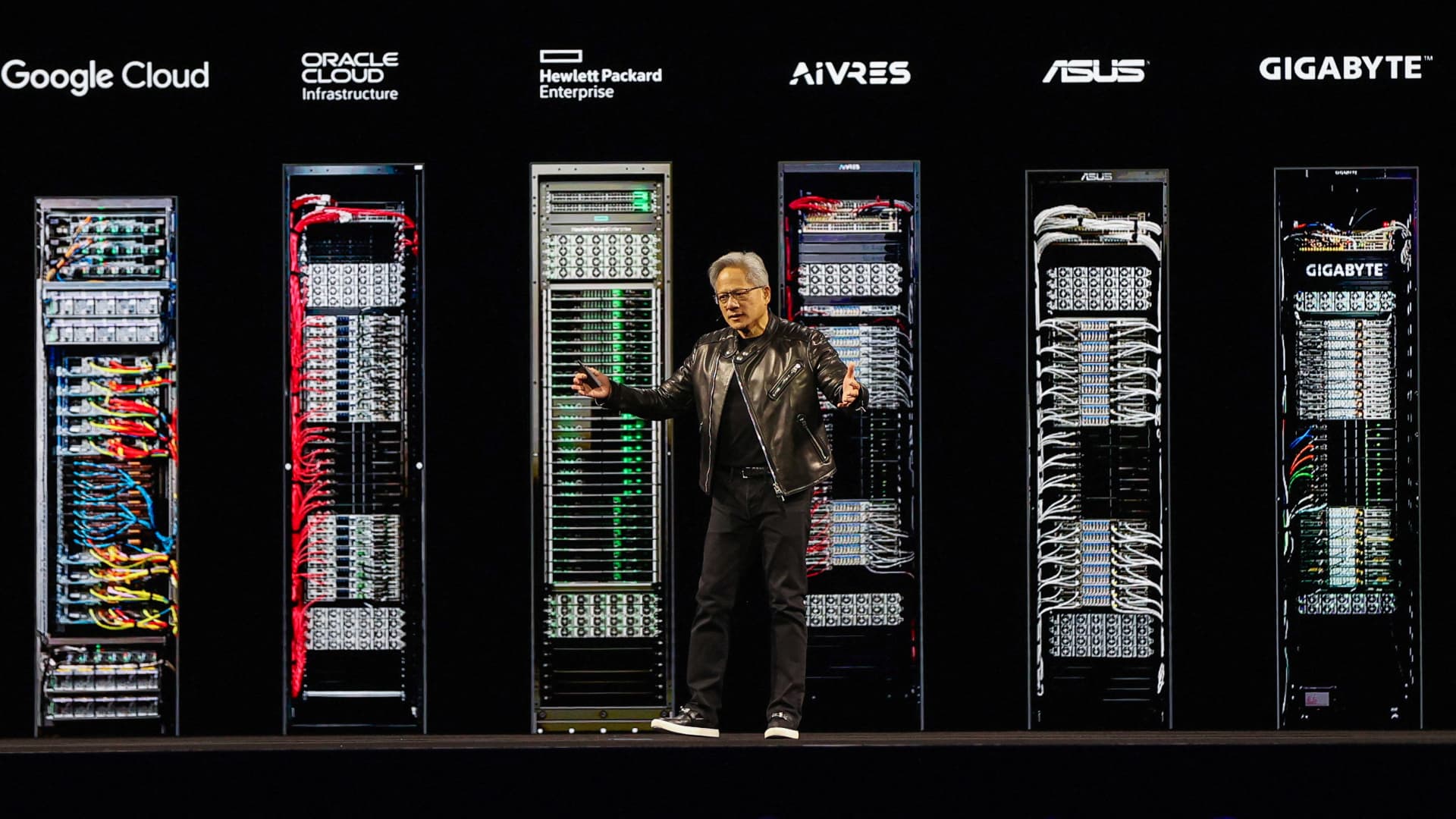Say hello to ionocaloric cooling. It’s a new way to lower temperatures with the potential to replace existing methods of chilling things with a process that is safer and better for the planet.
Typical refrigeration systems transport heat away…

Say hello to ionocaloric cooling. It’s a new way to lower temperatures with the potential to replace existing methods of chilling things with a process that is safer and better for the planet.
Typical refrigeration systems transport heat away…

Intuitive Machines (LUNR) has drawn fresh attention as investors weigh the impact of new US export curbs on tech to China. At the same time, the company is advancing its IM-3 lunar mission and securing NASA contracts.
See our latest analysis for Intuitive Machines.
Intuitive Machines stock has whipped through a period of volatility, recently clawing back gains with a 28% share price return over the past month despite ongoing US-China export tensions and scrutiny following past missions. Although year-to-date share price return remains in negative territory, the strong one-year total shareholder return of 60% suggests that long-term momentum is still firmly alive for patient investors.
If space tech’s recent rally has sparked your curiosity, you can see what’s happening across the entire sector with our aerospace and defense discovery screener using the following link: See the full list for free.
Given its recent contract wins, strong analyst sentiment, and a price still about 20 percent below consensus targets, are investors overlooking an undervalued space innovator? Or is future growth already built into the current share price?
With Intuitive Machines closing at $12.81 and the most widely followed narrative placing fair value at $15.43, this perspective sets a higher bar than the current market price. This hints at room for re-rating if assumptions hold.
Strategic vertical integration of satellite and lander manufacturing, along with proprietary advancements from the KinetX acquisition, enhances cost efficiencies, IP control, and technological differentiation. These factors support higher net margins and competitive pricing power as the company scales recurrent service contracts across civil, defense, and commercial markets.
Read the complete narrative.
Want to see what assumptions drive this bullish view? The narrative’s fair value hinges on powerful expansion bets, bold profit transformation, and sky-high valuation multiples rarely seen outside tech’s heavyweights. Curious which projections could justify such optimism? Discover the numbers on the next page.
Result: Fair Value of $15.43 (UNDERVALUED)
Have a read of the narrative in full and understand what’s behind the forecasts.
However, persistent losses and heavy reliance on large government contracts could quickly dampen the bullish outlook if execution or funding falls short.
Find out about the key risks to this Intuitive Machines narrative.
While Intuitive Machines looks attractive when compared to its fair value estimate, a look at its price-to-sales ratio tells a different story. The company is trading at 6.7 times its sales, which is much higher than the US Aerospace & Defense industry average of 3.2 and the peer average of 2.7. The market’s fair ratio, based on regression analysis, stands at just 1.4 times sales. This large gap suggests considerable valuation risk if the company fails to maintain its growth edge. Which view should investors trust?

Eni (BIT:ENI) reported earnings growth of 4% per year and revenue growth of 3.8% per year, both trailing the broader Italian market’s expectations of 9.7% earnings and 5% revenue growth. The company’s net profit margin shrank to 2.6% from 4.1% a year earlier. With profitability improving over the last five years and high-quality earnings, investors are weighing the premium Price-To-Earnings Ratio of 21.1x (above industry and peer averages) against a market price that still sits below the discounted cash flow fair value.
See our full analysis for Eni.
Next, we will see how these headline figures stack up against the prevailing narratives that investors follow—and where the data might surprise.
See what the community is saying about Eni
Analysts forecast that Eni’s profit margin will rise from 2.6% today to 5.8% in three years, even as revenue is projected to decrease by 0.7% per year over the same period.
According to the analysts’ consensus view, margin expansion is supported by:
Growth in higher-margin businesses like biorefining and sustainable mobility, with new biorefinery projects and partnerships fueling expanded revenue streams and better return on equity.
Strategic LNG expansion and diversification, specifically new projects in Africa and Asia, add resilience to earnings and help offset declining revenue in legacy operations.
Strong margin outlook could underpin future shareholder returns. See how the consensus narrative interprets this shift in direction. 📊 Read the full Eni Consensus Narrative.
Persistent losses in Eni’s Versalis (chemicals and downstream) division, with management noting a “lack of meaningful economic recovery” in this European sector, continue to drag on group earnings and introduce ongoing margin pressure.
Analysts’ consensus view notes two main risk areas:
Legacy businesses like Versalis generate negative free cash flow, and expected only “slight improvement” in margin outlook, raising concerns about lasting drag on net profits.
Eni’s upstream expansion in regions such as Africa and Argentina boosts production potential but increases exposure to regulatory and expropriation risks, which could disrupt future revenue streams or lead to asset losses.
Eni trades at a Price-To-Earnings Ratio of 21.1x, far above the industry and peer averages (14.5x and 14.7x). Yet its share price of €15.84 remains below both consensus analyst target (€15.75) and DCF fair value (€19.76).
Analysts’ consensus view underlines:
The small 2.9% difference between the current share price and the €15.75 consensus target suggests limited immediate upside. This implies the stock is close to being fairly priced in the eyes of most analysts.
Holding a valuation premium may weigh on sentiment if Eni’s forecasted growth continues to lag the broader Italian market. However, the DCF fair value offers longer-term support for investors who see further profitability gains.

Hexatronic Group (OM:HTRO) posted a forecasted earnings growth rate of 17.8% per year, outpacing the Swedish market, with expected revenue growth of 4.2% annually. Both figures signal momentum ahead of local peers. Over the past five years, the company has averaged an 18.3% annual earnings increase, though the latest net profit margin of 4.7% is down from last year’s 6.8%, showing some margin pressure has crept in. Even so, with Hexatronic trading at a 13.3x P/E ratio, well below its peer and industry averages and under the SEK33.3 estimated fair value, investors may see the setup as one of strength checked by caution on margins.
See our full analysis for Hexatronic Group.
Now it’s time to pit these headline numbers against the most widely held narratives. Some will match expectations, while others may surprise.
See what the community is saying about Hexatronic Group
Hexatronic’s decision to manufacture fiber optic cable in the US directly targets tariff increases and high freight costs, two line items that have notably squeezed margins and profitability in recent quarters.
Bears argue that these external pressures, especially rising freight expenses and persistent tariff impacts, create sustained risks for revenue margins.
The net profit margin sits at 4.7%, down sharply from the prior year’s 6.8%, highlighting that cost inflation has already eaten into profitability.
This contraction directly challenges the company’s ambition to improve regional margins through local production and operational tweaks.
Hexatronic’s Data Center business line reported record 41% sales growth and 37% EBITA growth, outpacing all other operating segments and positioning the business to capitalize on rising cloud demand.
Consensus narrative notes that these robust results, combined with efficiency gains in the Harsh Environment segment, are expected to drive profit margin improvement from 4.7% now to 5.6% in three years.
The uplift is anchored by analysts forecasting total earnings of SEK 459.8 million by 2028, compared to SEK 358.0 million today, signalling belief in the durability of cloud-driven growth.
What is surprising is that while most of Europe remains flat, success in Data Centers and targeted US investments have offset some of the headwinds from lagging regions.
Consensus sees growth in Data Center sales as the lever that could move earnings beyond expectations. 📊 Read the full Hexatronic Group Consensus Narrative.
With a current P/E of 13.3x compared to 36.2x for peers and 23.4x for the broader European electrical industry, Hexatronic trades at a clear discount, while its SEK 22.67 share price sits below both the analyst target (SEK 25.17) and DCF fair value (SEK 33.30).
Consensus narrative contends that this valuation gap could close if profit margins rebound and forecasts play out, but the market remains cautious amid margin compression and cash flow volatility.
Analysts’ consensus assumes minimal change in share count, projecting that future upside is driven by improved profitability, not financial engineering.
The 12.4% gap between current share price and analyst target provides a visible benchmark for upside, yet only if the company delivers on growth and cash flow improvement.

“We’re at 157 percent tariff for them. I don’t think that’s sustainable for them,” Trump said.
“They want to get that down, and we want certain things from them,” he added.
Trump is set to meet with Chinese leader Xi Jinping at the…

For the first time, astronomers have seen life’s building blocks in ice beyond the borders of our galaxy.
Among a mix of complex organic molecules trapped in ice circling a newborn star in the Large Magellanic Cloud, researchers found ethanol,…

Humanity’s understanding of the solar system has evolved dramatically following the advent of spaceflight. Over the past seven decades, thousands of sophisticated spacecraft have been launched on ambitious missions to look down on our planet,…

Millions of asteroids are currently zipping through our solar system. These rocky remnants of the early solar system receive extra attention when their itinerary brings them too close to Earth—which, fortunately, astronomers can…

Cameron Pappas, owner of Norton’s Florist
Norton’s
For Cameron Pappas, owner of Norton’s Florist in Birmingham, Alabama, the artificial intelligence boom is a world away.
While companies like Nvidia, Alphabet and Broadcom are lifting the stock market to fresh highs and bolstering GDP, Pappas is experiencing what’s happening in the real economy, one that’s far removed from Wall Street and Silicon Valley.
Small businesses like Norton’s, and companies of all sizes in retail, construction and hospitality, are struggling from higher costs brought by the Trump administration’s sweeping tariffs, and as downbeat consumers reduce their spending.
“We’ve just got an eagle eye on all of our costs,” Pappas, 36, told CNBC in an interview.
Norton’s generated $4 million in revenue last year, selling flowers, plants and gifts to locals. To avoid raising prices, which could cause customers to flee, Pappas has been forced to get creative, reworking some of his designs.
“If a bouquet has 25 stems in it, if you reduce that by three to four stems, then you’re able to keep the price the same,” Pappas said. “It’s really forced us to focus on that and to make sure that we’re pricing things the best that we possibly can.”
Pappas’ story and many like it are being masked in the macro data by the power of AI. In the first half of the year, AI-related capital expenditures contributed to 1.1% of GDP growth, according to a September report from JPMorgan Chase. That spending outpaced the U.S. consumer “as an engine of expansion,” the report said.
Total U.S. GDP increased at an annual rate of 3.8% during the second quarter of 2025 after falling 0.5% in the first quarter, the Commerce Department said.
U.S. manufacturing spending has contracted for seven straight months, according to the Institute for Supply Management. And construction spending has been flat to down, due to high interest rates and rising costs. Cushman & Wakefield said in a report this month that total project costs for construction in the fourth quarter will be up 4.6% from a year earlier because of tariffs on building materials.
The stock market shows a similar disconnect between AI and everybody else.
Nvidia CEO Jensen Huang delivers the keynote for the Nvidia GPU Technology Conference (GTC) at the SAP Center in San Jose, California, U.S. March 18, 2025.
Brittany Hosea-Small | Reuters
Eight tech companies are valued at $1 trillion or more and, to varying degrees, are all tied to AI. Those companies — Nvidia, Microsoft, Apple, Alphabet, Amazon, Meta, Tesla and Broadcom — make up about 37% of the S&P 500. Nvidia, with a $4.5 trillion market cap, accounts for over 7% of the benchmark’s value by itself.
Investors are giddy about the massive investments they’re seeing in AI infrastructure. Broadcom shares are up more than 50% this year after more than doubling in each of the prior two years, while Nvidia and Alphabet have jumped almost 40% in 2025.
That explains why the S&P 500 and Nasdaq are up 15% and 20%, respectively, reaching record highs on Friday, even as the government shutdown continues to cause economic angst.
Meanwhile, the S&P 500 subgroups that include consumer discretionary and consumer staples companies have increased by less than 5% year to date.
The latest troubling sign in the consumer market came on Thursday, when Target said it’s cutting 1,800 corporate jobs — the retailer’s first major round of layoffs in a decade. Target shares have plunged 30% this year.
“I think the message that the AI economy is sort of driving up the GDP numbers is a correct one,” Arun Sundararajan, a professor at New York University’s Stern School of Business, told CNBC in an interview. “There may be weakness in the rest of the economy, or not weakness, but there may be more modest growth.”
Investors will hear all about AI in the coming days, the busiest stretch of the quarter for tech earnings, and will be listening closely for additional guidance on capital expenditures. Meta, Microsoft and Alphabet report on Wednesday, followed by Apple and Amazon on Thursday.
Nvidia’s stock over the last year.
Last month, Nvidia announced a $100 billion investment in OpenAI, a startup valued at $500 billion. The capital will help OpenAI deploy at least 10 gigawatts of Nvidia systems, which is roughly equivalent to the annual power consumption of 8 million U.S. households.
Shares of Advanced Micro Devices have doubled this year and soared more than 20% earlier this month after the chipmaker announced a deal with OpenAI, while Oracle has been on a tear of late due to its ties to OpenAI and the broader infrastructure buildouts.
“Are we sort of inflating the economy now, thereby setting ourselves up for a crash in the future?” Sundararajan said. He added that he’s not seeing signs that demand for AI infrastructure will slow anytime soon.
When it comes to local businesses, most only know about the AI gold rush from the news headlines. One in four small business owners are stuck in “survival mode” as they contend with challenges like rising costs and tariffs, according to a September KeyBank Survey. It’s a segment of the economy that routinely accounts for about 40% of the nation’s GDP.
Pappas’ flower shop was founded in 1921, and purchased by his dad in 2002. The business has survived the Great Depression, World War II and the Covid pandemic. Pappas said his father, who died in 2022, reminded him that these periods were “just another season” for Norton’s, and that such challenges come with the territory.
But Trump’s tariffs have created a whole new set of constraints, as roughly 80% of all cut flowers in the U.S. are imported from countries like Colombia and Ecuador, according to the U.S. Department of Agriculture.
There’s no way for Norton’s to avoid higher import costs, but Pappas said he’s started buying some flowers directly from South American growers, which saves him money versus going through distributors that charge extra.
Pappas said it’s part of his “tariff price management” effort.
Trump’s tariffs will cost global businesses more than $1.2 trillion this year, and most of those costs are being passed onto consumers, according to S&P Global.
With the holiday season rapidly approaching, consumer sentiment is of particular importance. The picture is bleak.
The majority of U.S. consumers, 57%, that responded to a Deloitte survey published this month said they expect the economy to weaken in the year ahead, up from 30% a year ago. It’s the most negative outlook since the consulting firm began tracking sentiment in 1997.
Gen Z consumers, which the survey defined as ages 18 to 28, said they plan to spend an average of 34% less this holiday season compared to last year. Millennials, those between 29 and 44, said they expect to spend an average of 13% less this holiday season.
Additionally, seasonal hiring in the retail industry is poised to fall to its lowest level since the 2009 recession, according to a September report from job placement firm Challenger, Gray & Christmas.
The firm released another report earlier this month that showed new hiring in the U.S. has totaled just under 205,000 so far this year, off 58% from the same period last year.
The Starbucks logo is displayed in the window of a Starbucks Coffee shop on Sept. 25, 2025 in San Francisco, California.
Justin Sullivan | Getty Images
Starbucks announced a $1 billion restructuring plan in September that involves closing several stores in North America. Around 900 nonretail employees were laid off as part of the plan, and the company let go of another 1,100 corporate workers earlier this year.
Starbucks shares are down about 6% this year.
Shares of Wyndham Hotels & Resorts slumped on Thursday after the hotel chain issued disappointing third-quarter results. CEO Geoff Ballotti cited a “challenging macro backdrop” in the company’s earnings release. The stock is down roughly 25% year to date.
Even in parts of the tech industry that have benefited the most from the AI boom, companies have been conducting layoffs. Microsoft announced plans to cut around 9,000 jobs in July, which the company partly attributed to reducing layers of management. Salesforce is one of a number of tech companies that have announced layoffs, saying that AI can now handle the work.
But Hatim Rahman, an associate professor specializing in AI at Northwestern University’s Kellogg School of Management, said that most businesses using AI for efficiencies won’t find them right away. So companies can’t count on the technology to counter declining revenue and, Rahman said, “the road to the future is going to be bumpy.”
“AI is not a plug-and-play solution,” Rahman said. “For many organizations, it’s going to involve engagement with people, processes, culture, tools to be able to reap the benefits. And in the aggregate, it’s going to take time.”
WATCH: The AI boom is lifting the stock market, but it may be masking a weaker economy
